2024 SHS LESSON ECOSYSTEM LESSON 1.0, Questions and Answers WASSCE Standard
LESSON TARGET
Ecosystem
1.1 Basic ecological terms
1.2 Types of ecosystem and their components
Explanation of ecological terms:
ecosystem, species, population, ecology, ecosphere and community.
Natural ecosystem:
fresh water, marine, estuarine, lake, rainforest, savanna and desert.
Artificial ecosystem:
farmland, man-made lake, roads.
Components of ecosystem:
Biotic/ living (plants and animals) and abiotic/ non-living(soil, air, and water).
Effects of the components on each other.
Ecological factors:
biotic (predation and competition) and abiotic (climatic factors, salinity, altitude and slope of land)
Appropriateness of instruments used to measure abiotic factors.
LESSON
Basic ecological terms
Ecology:
is the study of living things and their interrelationship with each other and their environment.
Ecosystem;
An ecosystem is made up of living and non-living organisms in a particular habitat and their interaction with the physical environment. The habitat could be a forest, coral reef, river etc
Species;
These are distinct kind of organisms that can interbreed to produce fertile offspring with one another but do not breed with other population.
Population;
refers to a group of organisms of the same species occupying a particular habitat. E.g., a tree could house a population of birds.
Community:
It is a population of different species living in a particular habitat or interacting with each other.
For example, the ocean could be a community for different species of fish, crabs, coral,
Ecosphere;
Is part of the earth or atmosphere that supports life.
It can also be defined as the part of the universe habitable by living things.
Ecosphere
is interchangeable with biosphere. Biosphere can be divided into biomes.
Biome
A biome is a large natural terrestrial ecosystem which has a particular climate.
The type of vegetation in a biome is largely determined by climatic factors particularly rainfall and temperature.
Habitat
This is the natural dwelling place of an organism.
The main divisions of a habitat are;
1. Aquatic habitat
2. Terrestrial Habitat
3. Arboreal Habitat.
Aquatic Habitat
This is water as the natural home of organisms
Eg; Fresh water, streams, pond, ocean etc.
Terrestrial Habitat
This is land as the natural home of organisms.
Eg Rainforest, deserts, bush etc.
Aboreal Habitat
This refers to a habitat in and on trees.
Ecological Niche
A niche is an area within an ecosystem in which a particular group of organisms live in. A niche could provide a habitat for organisms of the same or different species. For example, a pond can be a home for different species of fish.
Although organisms may live in the same habitat, each has its own living space and source of food.
Ecological Factors
Ecological factors are those factors which affects an organism’s behaviour or development in an ecosystem.
Ecological Factors are grouped into two
1. Biotic Factors
2. Abiotic Factors.
Biotic factors
are factors concern with the way living organisms interact with one another.
Or biotic Factors are living organisms in a habitat or environment.
Examples of biotic factors
1. Predator: A carnivorous animal that hunts, kills and eats other animals in order to survive, or any other organism that behaves in a similar manner. This process is known as predation.
2. Competition: When a shared resource is in short supply, organisms compete, and those that are more successful survive
3. Symbiosis: A situation in which two organisms live with and are dependent on each other, to the advantage of both.
4. Epiphytism: This occurs when epiphytes (plants that do not have roots in the soil) attach themselves to other plants for supports. Epiphytes do not take any food from their hosts, and do not harm them.
Examples of useful biotic factors
1. Bacterial fixing nitrogen in the soil.
2. Birds acting as agents of pollination.
3. Fungi and bacteria decomposing organic matter.
4. Insects acting as agents of fruits and seeds dispersal.
5. Macro-organisms aerating the soil.
6. Trees providing shade or shelter to animals
Harmful biotic factors
1. Herbivores such as goats, sheep and cattle feeding on plants
2. Carnivores (e.g. lions, tigers etc) feeding on other animals
3. Parasites living on their hosts.
Abiotic Factors
These are non-living factors which affects living things in the environment.
Examples of abiotic factors
- Climate (rainfall, temperature, humidity, etc)
- Salinity (measurement of the mass of dissolved solids present in a given amount of water)
- Altitude (the height of something above sea level) slope of land etc.
Abiotic factors and Instruments use to measure them;
| Abiotic factor | Instrument use to measure |
| Temperature | Thermometer |
| Wind direction | Wind vane |
| Wind speed | Anemometer |
| Atmospheric pressure | Barometer |
| Amount of rain fall | Rain gauge |
| Relative humidity | Hydrometer |
| Acidity or alkalinity of a substance | pH indicator |
| Light intensity on land | Photometer |
Some ecological equipment
| Quadrat | Determining the number of living organisms within a given area |
| Butterfly net | Collecting flying insects |
| Pooter or Aspirator | Collecting or sampling small animals |
| Sweep net | Collecting insects and some land vertebrates |
CLICK FOR PREVIOUS LESSONS
Instruments.
Thermometer
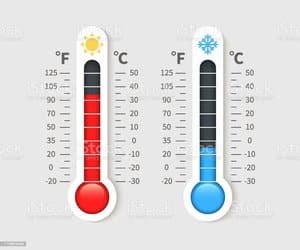
Sweep Net
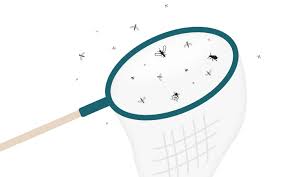
Pooter
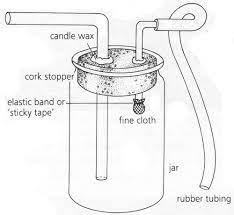
Rain Gauge
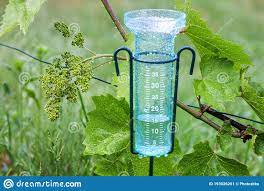
Quadrat

NB
Further explanations will be given during face – to – Face lesson with your Facilitator.
Assignment
Search for the following instruments
1. Light meter
2. Pitfall trap
3. Barometer
4. Anemometer Sacchi disc
Ex………….1
1. What is biotic factor?
2. Give two useful biotic factors in a forest habitat
3. Explain the following ecological concepts
i. Population
ii. Community
iii. Ecosphere
3. Study the diagrams carefully and answer the questions that follow.
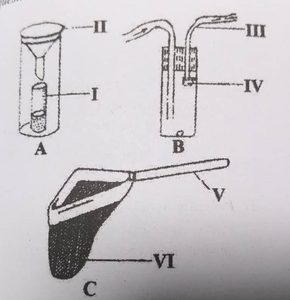
a. Identify instruments A, B and C
b. Name the parts labelled I, II, III, IV, V and VI
c. State one use each of A, B and C
d. Name one function each of the parts labelled
i. II
ii. III
iii. VI
e. Describe how A could be used for measuring an abiotic factor in a field trip.
Check next lesson for corrections.
Questions and Answers
1. Which of the following is not a problem associated with over- crowding?
A. Employment
B. Food
C. Labour
D. Housing .
Ans: Labour
2. Which of the following habitats is aquatic?
A. Rain forest
B. Farmland
C. Park
D. Pond.
Ans: pond
3. The organism designed C is a
A. Tertiary consumer
B. Primary consumer
C. Primary producer
D. Secondary consumer
Ans: secondary consumer
4. Which of the following food chains is correct?
A. Hawk > grass> grasshopper>frog
B. Grass> frog> grasshopper > hawk
C. Grasshopper> grass > frog > hawk
D. Grass> grasshopper > frog> hawk
Ans: Grass > grasshopper > frog > hawk .
5. The organism which obtain the least energy is
A. Grass. B. Earthworm
C. Hawk. D. Frog
Ans: hawk
6. An example of an abiotic factor in an ecosystem is
A. Predation. B. Grazing
C. Shading. D. Altitude
Ans: altitude
7. Which of the following statements best describes a food web ? It is a
A. Relationship between the living and non- living organisms in an ecosystem
B. Relationship between the living organisms in an ecosystem
C. Relationship between non-living components of an ecosystem
D. Complex feeding relationship between living organisms in an ecosystem.
Ans: complex feeding relationship between living organisms in an ecosystem.
8. A feeding association in which one partner benefits while the other loses is known as
A. Symbiosis
B. Parasitism
C. Mutualism
D. Commensalism
Ans: parasitism
9. One of the advantages of ecological farming is that it helps to
A. Promote the use of fertilizer
B. Maintain environmental conditions
C. Promote lumbering industries
D. Mechanized farming activities
Ans: maintain environmental conditions
10. The essential elements to consider in town planning are
I. provision of schools
II. human waste disposal system
III. water supply
A. I and II only
B. I and III only
C. II and III only
D. I ,II and III
Ans: I , II and III.
11. Coastal ecosystems where seawater and freshwater meet are known as
A. Lagoons
B. intertidal zones
C. seashores
D. estuaries
Ans: estuaries
12. The role played by auxins in the phototropism is to
A. inhibit growth of cells on one side of the stem
B. promote growth of all the cells of the stem
C. inhibit growth of cells on all sides of the stem
D. stimulate growth of cells on one side of the stem
Ans: stimulate growth of cells on one side of the stem.
13. Which of the following instruments is used to measure the humidity of the atmosphere
A. Hygrometer
B. Barometer
C. Manometer
D. Hydrometer
Ans: hygrometer
14. The following factors are associated with aquatic life except
A. Sunlight penetration
B. Temperature
C. Wave action
D. Humidity
Ans: sunlight penetration
15. An example of a harmful biotic factor is
A. animals dispersing weeds and fruits
B. predators feeding on prey
C. insects pollinating flowers
D. trees providing shades for animals.
Ans: predators feeding in prey
16. Rural- urban migration is said to hamper agricultural activities in farming areas because
A. agricultural land is left to go waste .
B. agricultural labour force reduces
C. crops do not get enough nutrients.
D. more agro- industries have to be established in the cities.
Ans: agricultural labour force reduces.
17. Which of these statements about abiotic factors is not correct?
A. Light intensity affect green plants more than animals
B. An increase in humidity decreases the rate of water loss through transpiration.
C. Effective dispersal of some fruits and seeds are dependent on prevailing winds
D. Air pressure and oxygen levels increase as altitude decreases
Ans: effective dispersal of some fruits and seeds are dependent on prevailing winds.
18. Formulating policies to help conserve natural resources ensures
A. that the resources of the country are exported for foreign exchange
B. that the resources are exploited so that every citizen can obtain a fair share of the national cake
C. proper management of resources to sustain the present and future generations.
D. that every citizen of the country helps to keep the environment clean.
Ans: proper management of resources to sustain the present and future generations.
19. Which of the following cultural practices conserves the forest?
A. Shifting cultivation
B. Cover – cropping
C. Crop rotation
D. Mechanized farming
Ans: crop rotation.
20. The concentration of industries Ina urban areas of a country may
A. lead to high population growth in those areas
B. distrub the ecosystem of the country
C. affect the energy requirement of the country
D. lead to decreased supply if goods and services.
Ans: disturb the ecosystem of the country.
CLICK TO JOIN SHS LEARNERS PLATFORM
Examination malpractice: Court fines 4 SHS students GH¢3,120
World Bank leads review of free SHS and other flagship programmes
NEW ; GES 2024 Academic Calendar For Schools
Skeletal System Objective Questions and Answers WASSCE standard
Social Studies objectives Questions and Answers WASSCE Standard Part 0018
Soil Conservation Objectives Integrated Science WASSCE Standard lesson 0019







good document